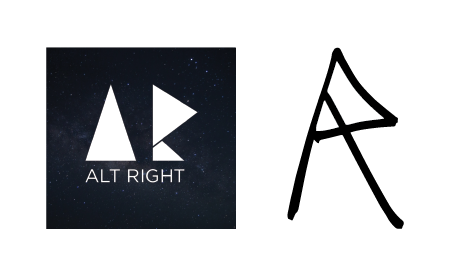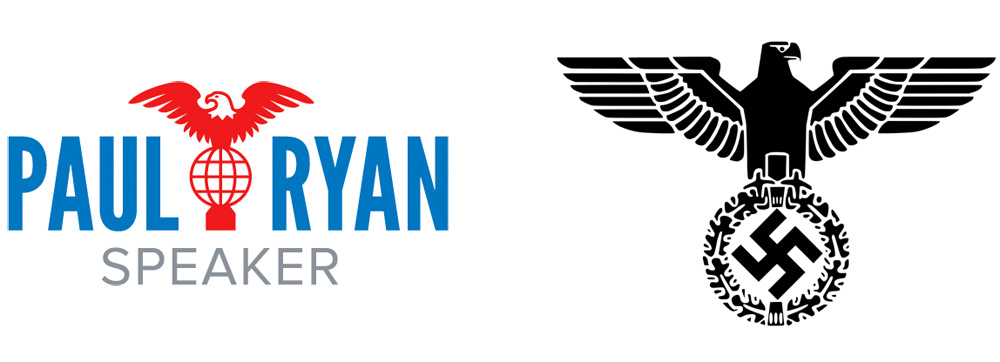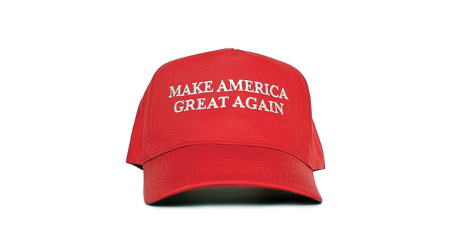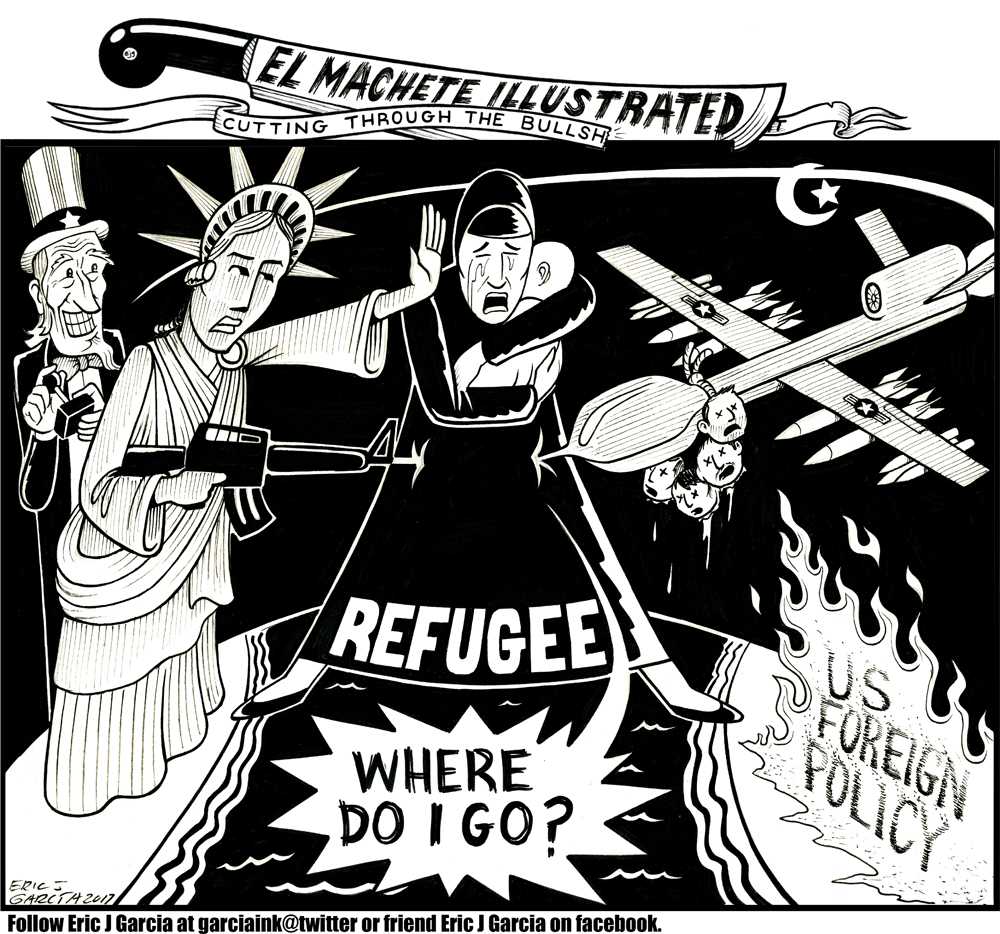 The swastika is so 1941. At least that’s what the National Socialist Movement (NSM), an American neo-Nazi political party, wants you to think. Following the ascension of Donald J. Trump from branding and business mogul to the office of the 45th President of the United States of America, Jeff Schoep, leader of the NSM, was quoted in the New York Times saying it was time for his party “to become more integrated and more mainstream.”
The swastika is so 1941. At least that’s what the National Socialist Movement (NSM), an American neo-Nazi political party, wants you to think. Following the ascension of Donald J. Trump from branding and business mogul to the office of the 45th President of the United States of America, Jeff Schoep, leader of the NSM, was quoted in the New York Times saying it was time for his party “to become more integrated and more mainstream.”
He was addressing a new breed of conservative nationalism seen as partly responsible for Trump’s victory: the alt-right. Andrew Anglin, founder of the neo-Nazi publication The Daily Stormer, wrote that the ideology was a “reboot of the White Nationalist movement.”
So it’s no mystery why, then, around the same time, the NSM switched out its beloved swastika for its far less popular cousin, the Odal rune.
The Odal rune was the symbol of the ethnic infantry Germans of the 7th Waffen-SS Volunteer Mountain Division during World War II. It is a letter from the oldest known runic alphabet, the Germanic Elder Futhark writing system. It represents the “o” sound, and its proto-Germanic oþalan pronunciation means roughly, “Heritage, inheritance, inherited estate.”
Like the swastika before, the Odal rune is comprised of only 45-degree angles. On January 22, the NSM updated their interim Odal rune with one designed to match the scaled stroke weight of the swastika, and the rune’s feet have been sheared horizontally. Now, the symbol is stabilized, more foreboding. Think of it as the American swastika.
Schoep said the Odal rune will replace the swastika on all uniforms and party regalia (e.g. the official NSM flag and patch) moving forward; essentially, they just really want to be seen as a special, new-age Nazi party now.
With a 2011 New York Times estimate putting membership at around 400 members across 32 states, it is the largest neo-Nazi movement in the country. There are not more current membership statistics.
 The Alt-Right
The Alt-Right
The term “alt-right” was coined by National Policy Institute (NPI) President and face-punch target Richard B. Spencer in 2010 to dissociate capitalist American nationalism from its European identity politics roots. The white supremacist think-tank, based in Washington, D.C., has been trying to sex up far-right ideologies for the past 12 years with little fanfare.
Until, that is, the 2016 NPI conference, at which Spencer declared the election of Trump as “the first step towards identity politics in the United States.” He ended his rousing, Nazi-inspired speech (e.g. referring to the “mainstream media” as the “Lügenpresse,” as the Nazis did their critics) with, “Hail Trump! Hail our people! Hail victory!”
Which was around when neo-Nazis and alt-right conservatives finally set aside their differences (mainly their continued disagreement about antisemitism) to work for the common good.
The alt-right movement, meanwhile — still relatively decentralized (all things considered) — is scrambling to come up with its own official logo. An upcoming frontrunner, the “Always Resist” symbol by anonymous blogger “PA,” really just looks like someone screwed up drawing an Odal rune. Its inception is a painstaking recreation of spraypaint; it wants to be the mark of what the President has called the “forgotten men and women.” But the evolved resemblance is to the Odal Rune is no mistake. Each has two legs that apex triangularly. Should the alt-right formalize into a political party, expect to see this as their mark.
A version of the symbol was rushed through design in August after then-Democratic nominee Hilary Clinton accused her opponent of enabling alt-right rhetoric, and first appeared at an alt-right conference alongside Spencer in September 2016. The original mark is bulkier and very clearly a capital “A” and “R,” and, for some reason, foregrounded against a starry night sky. It is, like the Odal rune and the swastika, a sharp, angular mark. It is designed to convey power and tension — obvious Ku Klux Klan white hood allusions aside.
 Paul Ryan
Paul Ryan
And then there’s Paul Ryan. On January 6, the Speaker of the House unveiled his personal brand logo, and some people are having difficulty understanding really just, like, why. It’s most criticized as bearing heavy resemblance to the Parteiadler — the official symbol of the German National Socialist Party, the throwback Nazis, between 1935-1945 — which is itself a version of the Holy Roman Empire’s Reichsadler still in use by the Federal Republic of Germany today. Both marks feature a heraldic eagle in the espanie position: an affronté (front-facing) body with head dexter (turned to the viewer’s left). This all is intended to communicate perspicacity and fortitude.
In reality, though, Ryan’s logo is a representation of the Mace of the United States House of Representatives, the symbol of the Sergeant at Arms. One of the oldest icons of the United States government, it has been in use since 1842, a cool 91 years before the rise of the Third Reich. Intentional or not, though, basically everybody involved in the new mark’s development should’ve known better — given all that’s going on right now.
 Donald J. Trump
Donald J. Trump
It is no coincidence that these white nationalist entities are undergoing simultaneous re-designs. Branding, at its best, unifies and communicates the intrinsic qualities of the branded. And its worst, it attempts to exploit market share.
The “Make America Great Again” slogan was filed for trademark way back on November 19, 2012 (United States Patent Office application serial number 85783371) — just 13 days following Mitt Romney’s failed presidential bid. Associated Press fabric testing concluded those “Make America Great Again” hats — Pantone swatch 18-1763 TCX, “High Risk Red” — did not contain the U.S.-made fabric its Los Angeles manufacturer had claimed. The bills and stiffeners were also imported, despite Trump’s campaign’s insistence otherwise.
In a January 18 interview with the Washington Post, the President proudly revealed his 2020 re-election campaign slogan: Keep America great. May include exclamation point.
Put another way: The world’s greatest marketer was just elected to the highest office in the land. His last name has included hotels, steaks, golf courses, clothing, casinos, fake education, board games, television that people supposedly watched — even goddamn bottled water. And neo-Nazis and alt-right conservatives are all starting to take note of the power of branding and dogwhistle political visuals and signals in the age of instant information and opinion.
So consider the words of Robert Passikoff, CEO of Brand Keys, a predictive brand equity firm: “Trump has been one of the most powerful brands we’ve ever tracked. Now, I suppose, he literally qualifies as the most powerful brand in the world. Especially given the new set of values that the brand has created around itself: victory, self-confidence and determination, a sense of the visionary, and ultimately greatness. We’ll have to factor those into our next Presidential Model.”







